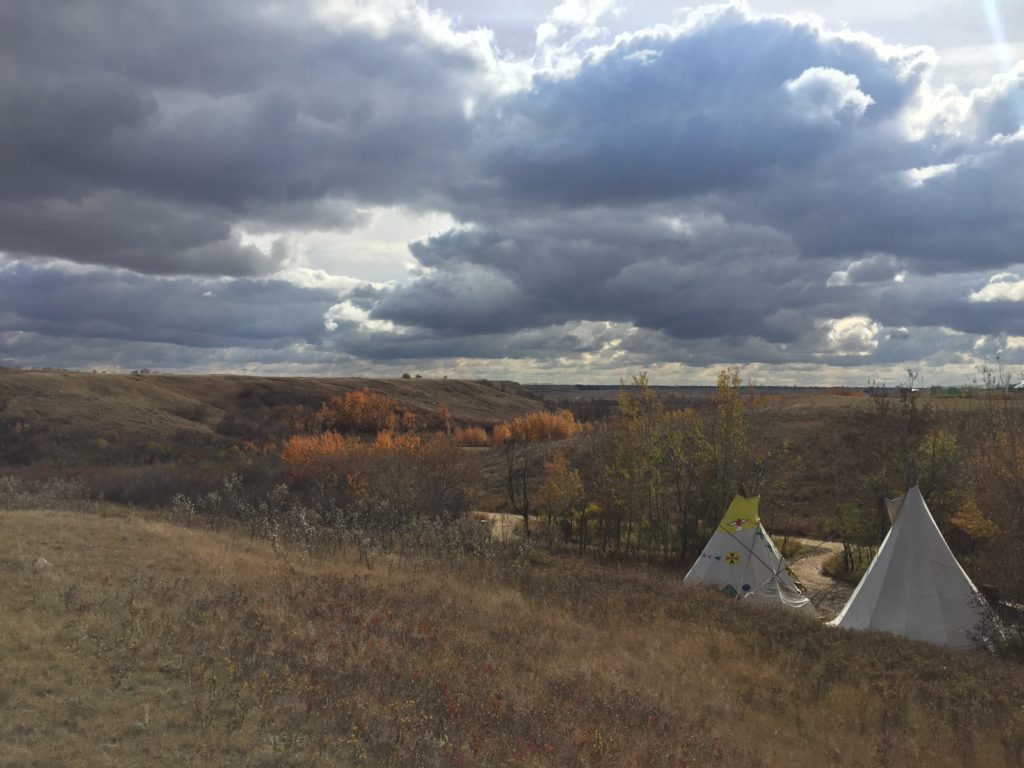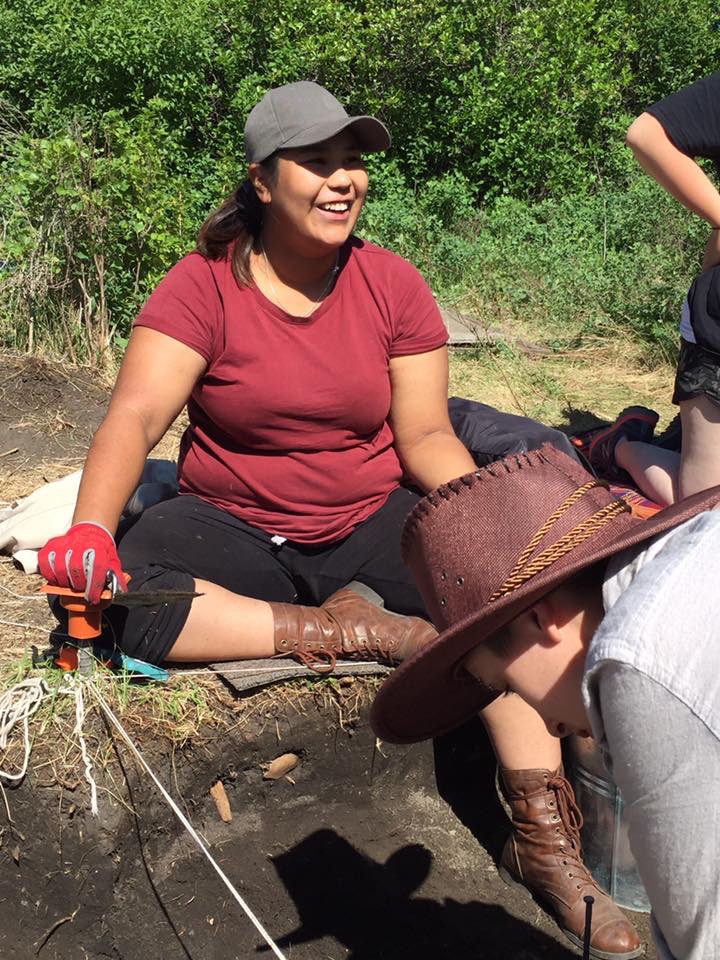Community Feature: Honey Constant

tānisī nitotēmak, Honey Constant nitisīyikasо̄n, nēhiyaw-iskwēw о̄ma niya. pakitahwākan-sākahikanik ochi niya. ninohtē-nēhiyawān.

Hello, my friends. My name is Honey Constant, I am Plains Cree from Sturgeon Lake First Nation, and I want to speak Cree. I am an intergenerational residential school survivor and I am currently obtaining my Masters in Archaeology with the University of Saskatchewan. My focus is in Plains and Indigenous Archaeology which are subfields or theories that I use to guide the work I do as an archaeologist. My journey to where I am today has been a long and winding one, as I am sure many of our journeys are.



In a nutshell, I started on this journey when I was 16 years old after I visited a Native American section in my favourite museum and was underwhelmed by the lack of vibrancy. It did not reflect the voices, livelihood, and culture of the people in a way that truly shared their stories. I immediately researched education requirements of a curator and I knew my pathway. The next year, I started university and declared my major in Archaeology. The next major milestone was in my third year after I completed my field school at Wanuskewin and I had taken the Plains Archaeology course with Dr. Ernie Walker, who is now my Master’s supervisor. I fell in love with Wanuskewin, the history of the opimihāw valley, and the connection to Indigenous ways of knowing embedded in the park.
Wanuskewin is a National Historic Site that is currently on the tentative list for UNESCO World Heritage Site Designation. As of 2015, the designation is one of four pillars of the Thundering Ahead capital campaign. As a non-profit organization we raised funds to renovate and expand the visitor centre, bolster our programming and exhibits, restore a herd of Plains Bison to the land, and protect our valley as an ecological island. As of December 2019, we have welcomed 11 pure Plains Bison with the addition of four new bison calves this spring.
This is the first time in over 150 years (at least), that bison have been on the land. In Indigenous culture, the “seven generations teaching” is where we make decisions based on how it will affect seven generations into the future. By protecting and educating on the importance of native grasslands, we can bring awareness of the impact broken prairie has on climate change.



Wanuskewin the longest running archaeological research dig in Canada spanning over 40 years. From this work, we know that there is a total of 19 pre-contact sites including campsites, two bison jumps, one bison pound, processing sites, and the most northernly documented medicine wheel on the plains. What makes Wanuskewin more unique is that it was home to every Indigenous group in the Northern Plains at some point in our 6000-year history of human occupation in the opimihāw valley.
Wanuskewin plays a huge role in my life and as I work further into my Master’s thesis, the more I am realizing that everything happens for a reason. In grade one, I attended a French immersion school where I was one of three indigenous students. One day, we went on a field trip to Wanuskewin and the only thing I remember was seeing a men’s fancy dancer in golden yellow regalia dancing. I thought to myself, “wow, this is my culture.” When I was 20 years old, I started my field school with a two-hour hike through the valley. Dr Walker wanted us to understand the site before we began excavations and as we were walking, I felt like I belonged, like I was home. nikīwan. Later that year, I applied for a Senior Interpreter position with the Visitor Service team and I started my career with the park. It is coming up on three years this winter, and I could not be happier.



Not only has it shaped and formed my Master’s thesis, but it has also allowed me to further practice and reconnect to my culture and language. My thesis is to design a new archaeological interpretive program as an Indigenous archaeologist. My goal is to tell the archaeological story through traditional storytelling, place-based learning, and balancing western science with Indigenous Ways of Knowing. Questions I ask myself are: “How can Archaeology contribute to Reconciliation in Saskatchewan” and “How can I as an Indigenous woman advocate for the inclusion and protection of Indigenous knowledge in Archaeology.” I could speak for hours on these topics as I held them closely to me since I was 16 years old.
The short answer? This work is valuable, complicated, and needed. I know I am not the only one to be doing this work and I am grateful. I am thankful for the support of my family and my partner, who encourage me constantly. I am thankful for the work of those who have blazed this path before me. I am grateful to the Truth and Reconciliation Commission for exposing the truth of Indian Residential Schools in Canada and for holding us accountable through the 94 Calls to Action. I am thankful for my supervisor, Dr Ernie Walker, for working hard to establish Wanuskewin as a heritage park in the 1980s and 1990s, when no one was doing reconciliation or engaging with Indigenous communities.
This work is done in collaboration with Indigenous peoples, for Indigenous and non-Indigenous alike since a sweat ceremony took place in the valley with Elders where they agreed to join Wanuskewin on that journey. It was not because they saw monetary value or tourism potential, but instead they believed that “it always was meant to happen.” There is a spiritual understanding that the work Wanuskewin does was (and continues to be), needed.



I am thankful to have such a strong role model in reconciliation and wahkо̄towin, a Cree teaching that means kinship, all my relations, where the bonds we share make us family and teaches us that we are all connected in this circle… and that everything happens for a reason.
kinanāskomitin.
Honey
Honey Constant is a CPAWS-SK Board member. You can see her bio on our staff about page.
